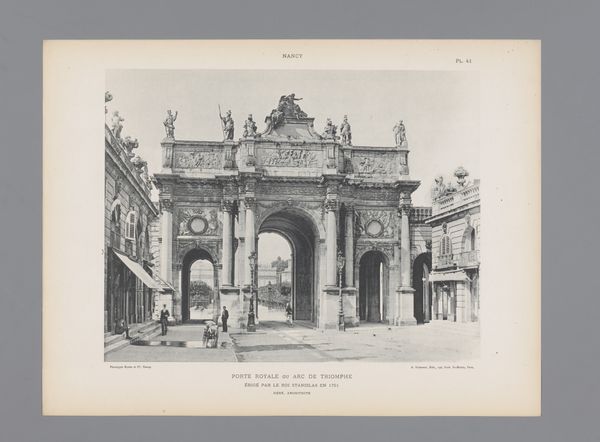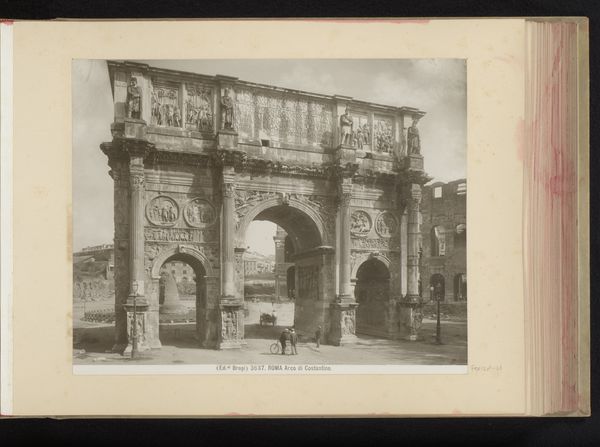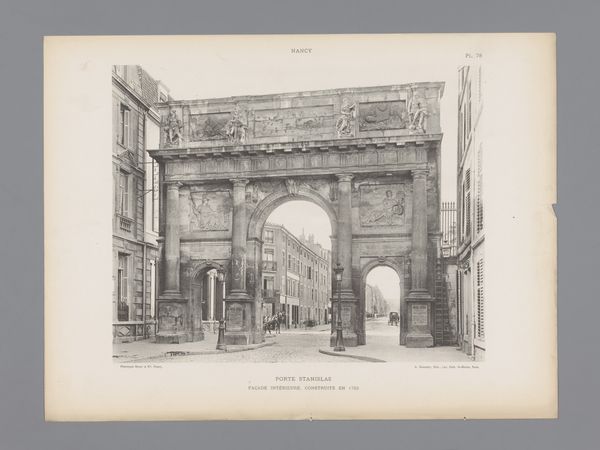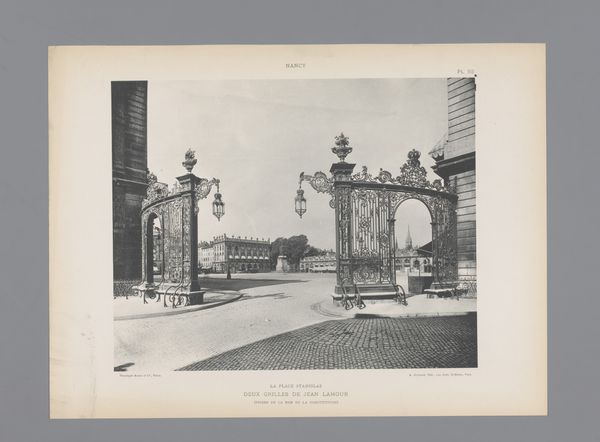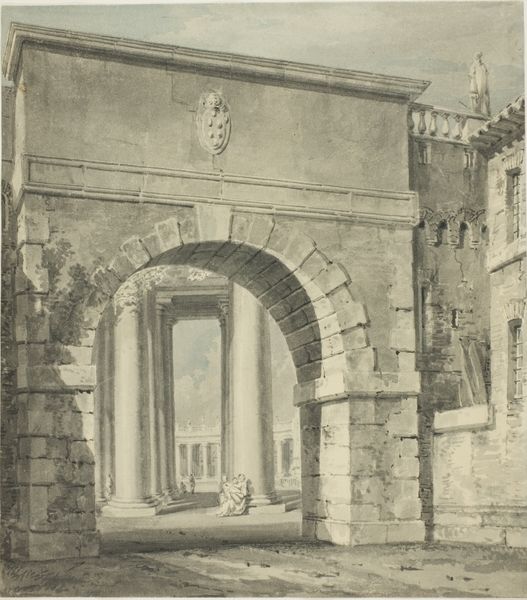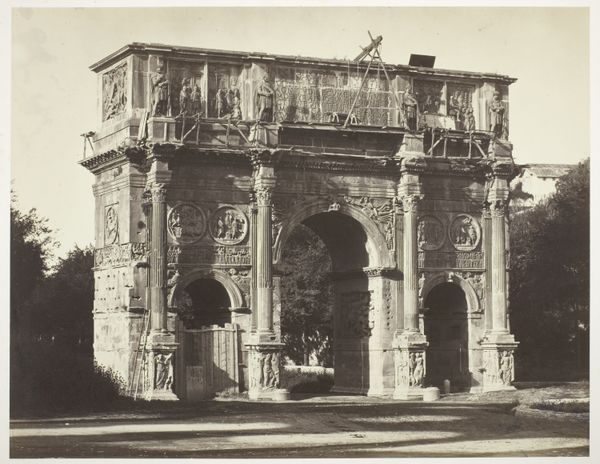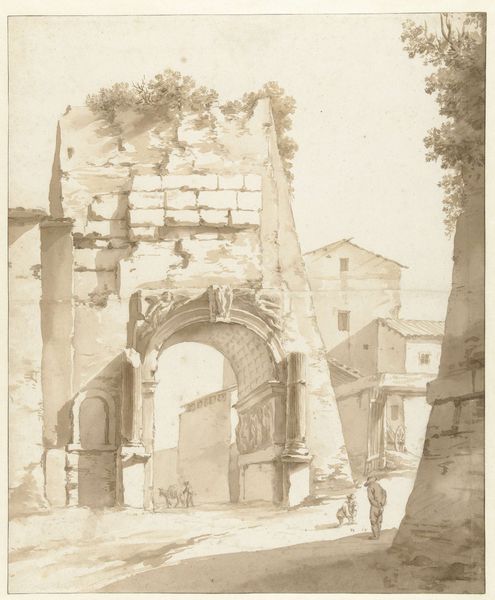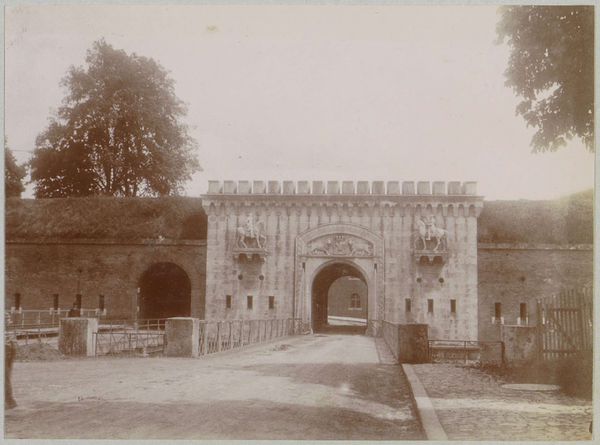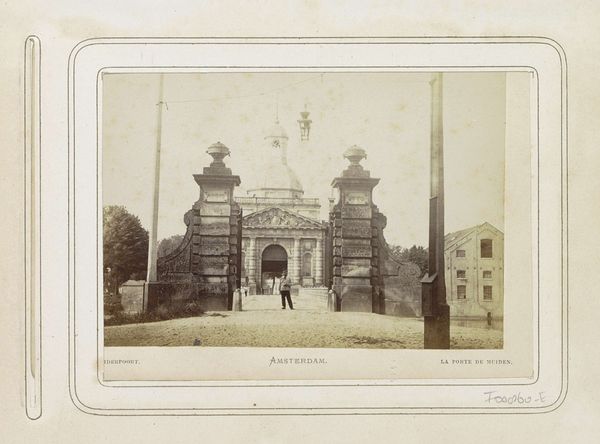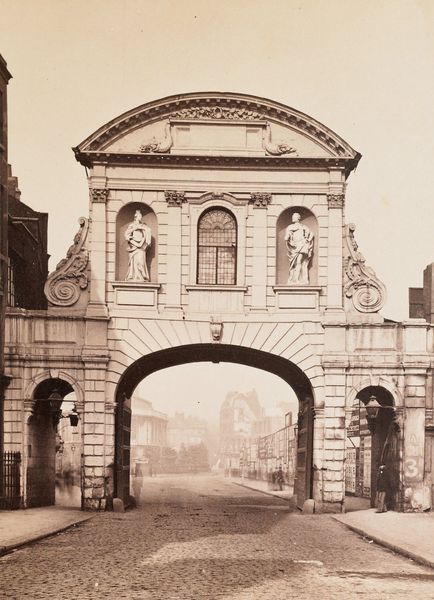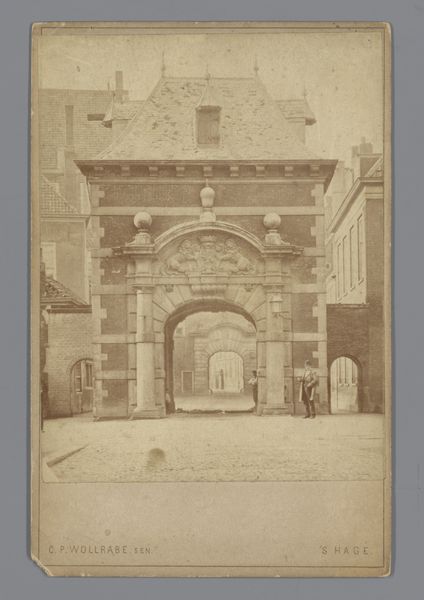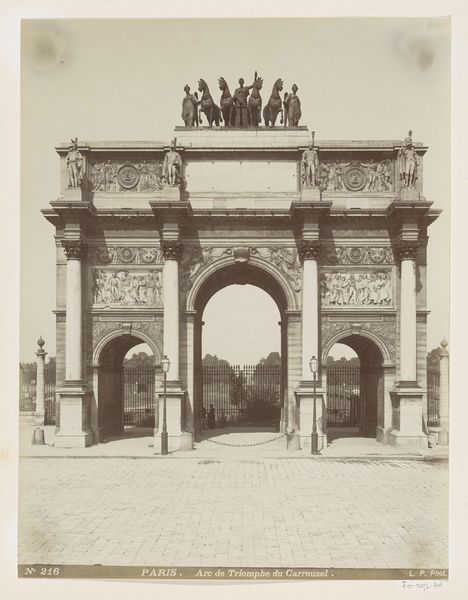
print, photography, architecture
# print
#
photography
#
ancient-mediterranean
#
cityscape
#
architecture
#
realism
Dimensions: height 194 mm, width 242 mm, height 309 mm, width 507 mm
Copyright: Rijks Museum: Open Domain
Curator: This photograph, titled "Rome, Boog van Constantijn," likely captured between 1893 and 1903, presents the Arch of Constantine as envisioned by the Fratelli Alinari. It’s a compelling glimpse into how ancient monuments were being documented and perceived at the turn of the century. Editor: The overwhelming feeling I get is one of solemn grandeur, but also, strangely, of faded glory. The sepia tones drain away the life, and emphasize the stark stonework against the background ruins. It feels less triumphant and more… melancholic? Curator: Indeed. What's fascinating here is the way the Alinari brothers are using photographic realism not simply to document but to present a specific narrative of the city and its relationship to its ancient past. Rome becomes a kind of stage for reflecting on time and power. Editor: Absolutely. And the way the people are positioned – dwarfed by the sheer scale of the arch, almost ghost-like – really underscores that point. It feels like a deliberate artistic choice to emphasize the insignificance of the present against the monumental weight of history. They really nailed the power dynamic with their staging here. It feels intentional and crafted. Curator: Precisely. And beyond aesthetics, the image also participates in a growing culture of architectural documentation that really shifted understandings of classical sites and the discourse of urban spaces, making it an almost political project about cultural values and representation. The act of photographing it, framing it this way for the viewers. Editor: The detail is astonishing though! The light catches those carved figures and bas-reliefs… Makes you want to run your hands over the stone. A real sense of age and timelessness. You said the quiet staging contributes? Yes it definitely leaves me ruminating. I wonder how the photo itself might now play into modern-day Italian cultural identity. Curator: Precisely, you touch on a crucial point: the enduring impact of historical representation on national identity. Images like these circulated widely, both romanticizing and formalizing Italy’s heritage as it came into its own on the global stage. Editor: Seeing it like this does change your view of it. Makes you realize how images create history, they're not just documenting it. Thanks! Curator: Indeed. Thank you! It gives us all something new to think about, myself included.
Comments
No comments
Be the first to comment and join the conversation on the ultimate creative platform.
